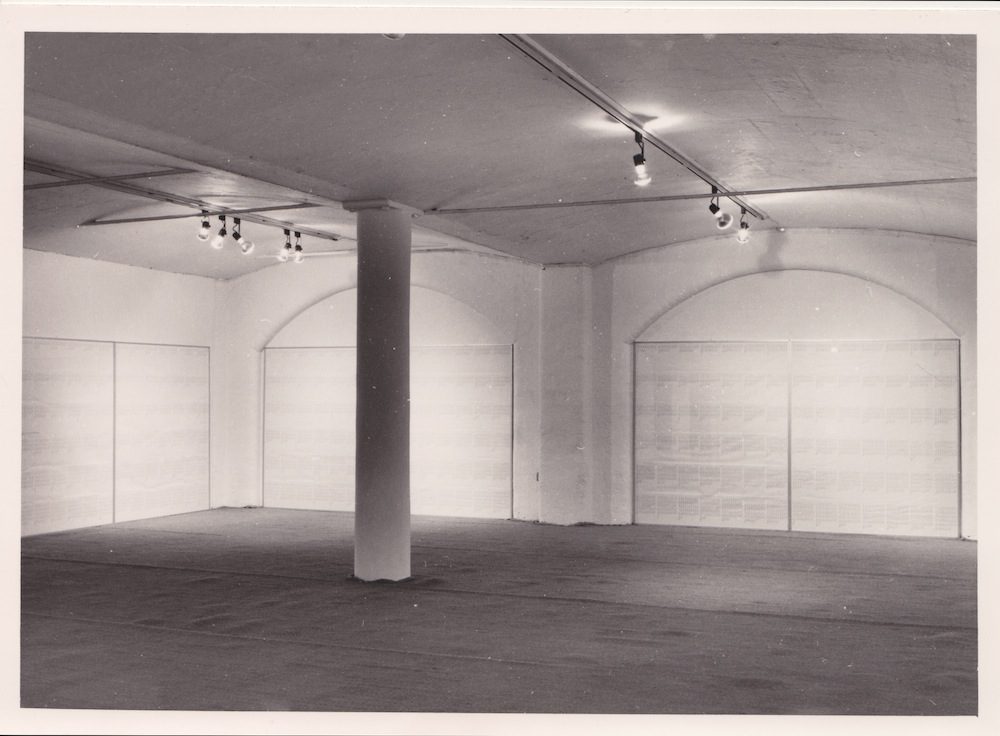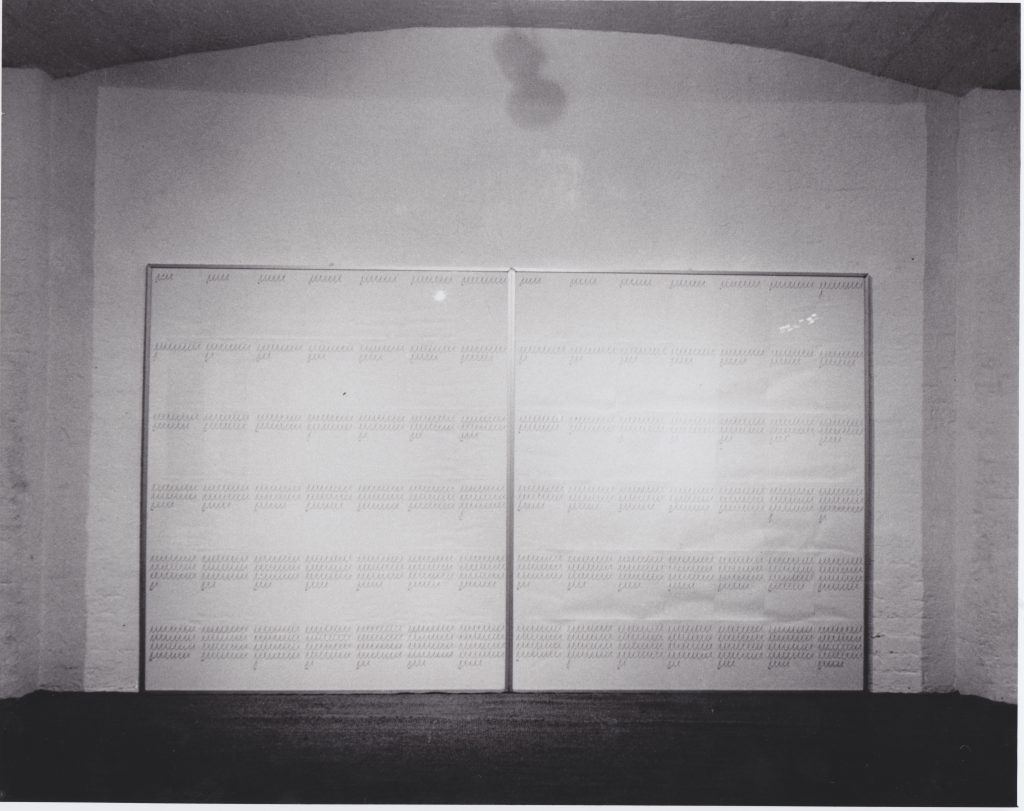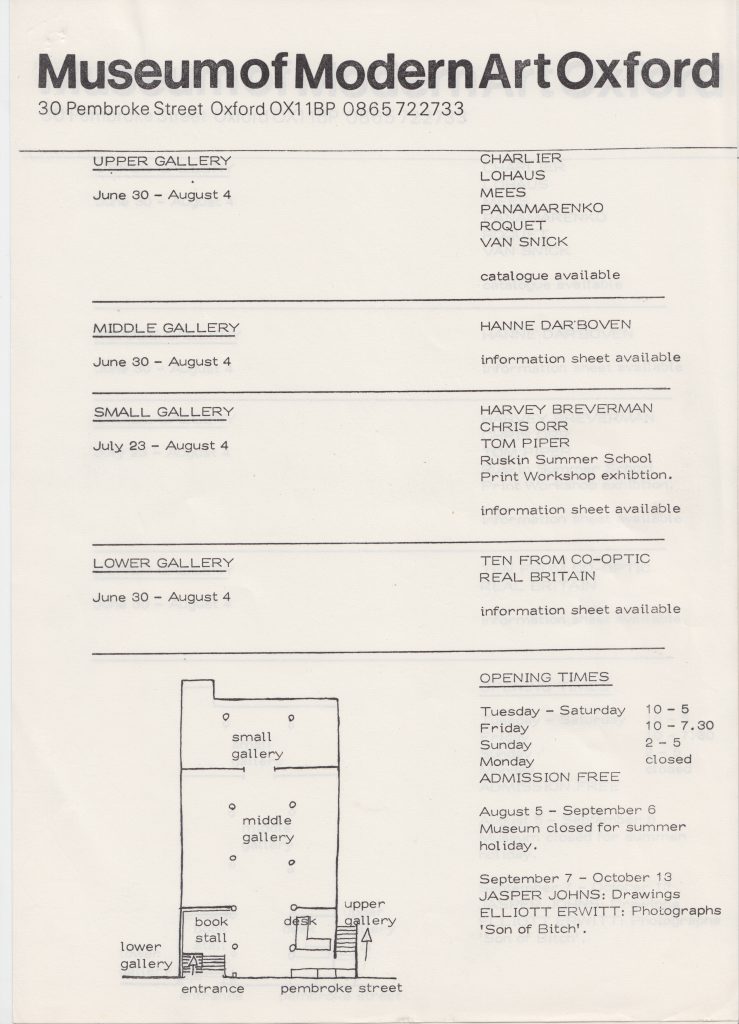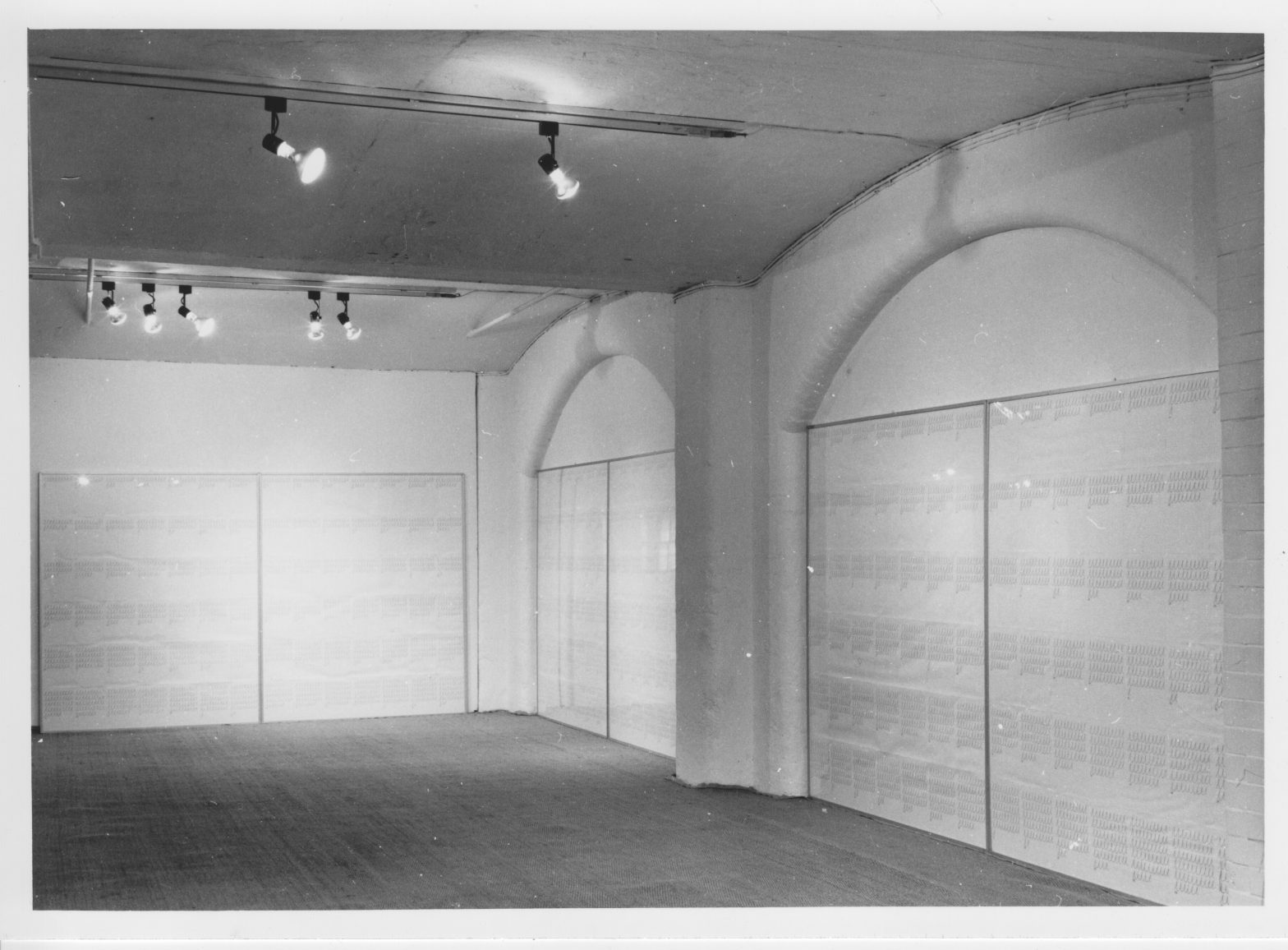Hanne Darboven exhibited in what was previously known as the Middle Gallery (currently the café and shop area) at the Museum of Modern Art Oxford between 30 June and 4 August 1974.

Hanne Darboven (b. 1941, Munich, d. 2009, Hamburg) studied painting at the Hochschule für bildende Kunst Hamburg, under one of the best Op-painters in Germany, Brazilian Almir Mavignier, but left dissatisfied, feeling as though she was seen as just a daughter of a wealthy family.
In New York, living an isolated life in a room in Manhattan, Darboven chanced on meeting Sol LeWitt who after seeing a handful of drawings, insisted on seeing more. LeWitt then offered Darboven her first exhibition, which was held in 1967.
Darboven’s style moved from closed geometric forms to open line formations. Most have a double-sided symmetry in which the lines and figures on one half of the paper are mirroring those on the other. No longer remaining as constructions of line, Darboven edged away from visual traditions, replacing them with numbers, figures and sometimes words.

Instead of using number combinations mathematically, Darboven began to use dates. The sequence of a week, month and a year would create a system. For example, leaving out full stops, 23 October 1971 would be written as 23971, which she would express in either words of figures. In this form, which Darboven called “writing out” dates, she would find that they led to astronomic sums and writing without an end.
Darboven treated digits not as making up numbers, but in isolation, purely subjective. After elaborately playing with them, her words end up as elementary codes. These “written out” totals made visual forms. Darboven was never interested in mathematics itself but rather, she used numbers as a visual pattern and shift, rather than to elicit mystical or mythical associations.
Prior to exhibiting at the Museum of Modern Art Oxford in 1974, Darboven was well established thanks to a string of exhibitions at Konrad Fischer Galerie, Dusseldorf; Art & Project, Amsterdam; Galleria Sperone, Turin and Städtisches Museum, Mönchengladbach.

The exhibition held in Oxford came under the tenure of Sir Nicholas Serota and was previously shown at the Palais des Beaux Arts, Brussels, earlier the same year. On display were 19 minimalist drawings, which together formed one single work. Each drawing was built up of sheets of humble exercise book paper. Darboven gave a U-shape loop for each number. On the first panel, the numbers run across from two to 43, then three to 44 on the next, and so on until the first number is 20 and the last is 61. A pattern emerges as the numbers grow larger and the length of the squiggle extended. The work shows extreme dedication and patience. The overall attempt is to demonstrate the passage of time.

The descriptive text handed out alongside the exhibition explained, “In an ideal situation, they would be exhibited in a continuous line, frame to frame. We regret that the architecture of the Museum does not permit such an arrangement”. Correspondence found in the Modern Art Oxford archive reveals that the ideal layout was also not achieved in the earlier exhibition in Brussels. If the 19 drawings were to be shown in a line, a repeated wedge shape would stretch out over the expanse of paper.
As is clear from the surviving press installation photographs of the exhibition, which show 14 of the drawings, the large, metal-framed drawings were presented on side-by-side whitewashed brick walls, with junctures at the corners of the gallery space.
Taken from original documents in the Modern Art Oxford archive.
